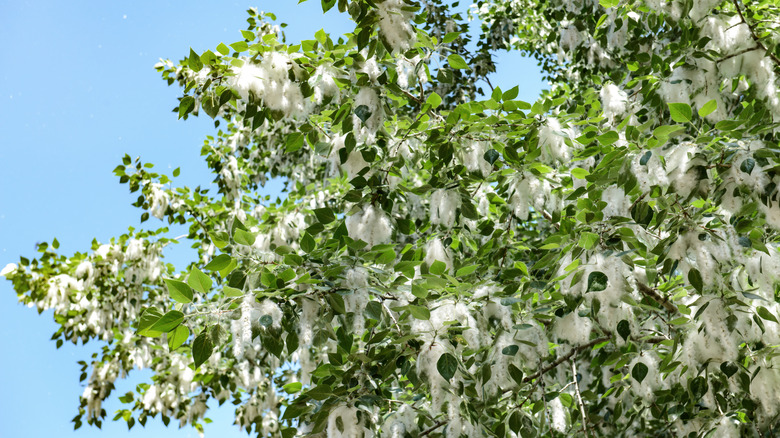Garden Trees, Shrubs & Vines
teine/iStock
Lucy Clark
Cottonwood trees are very popular and commonly found trees in North America, as well as Asia and Europe, according to Leafy Place. They belong to the populus, or poplar, genus and are related to aspen trees. They can grow up to 100 feet tall but average around 50 to 80 feet.
This tree gets its common name from the fluffy, cotton-like leaves it grows starting in June, which can upset some people’s allergies when they get caught in breezes. Cottonwoods can live anywhere from 50 to 150 years, depending on the species, and they grow very quickly.
Cottonwood trees tend to be a little controversial amongst landscapers and those looking to add a new tree to their yard. If the fluff it produces in the summer doesn’t upset your allergies, it can still be somewhat unsightly and hard to maintain. However, there is one hidden benefit to having this tree in your yard — especially in the summer months.
They provide lots of shade

OksanaGoskova/Shutterstock
Cottonwoods have been historically praised for how much shade they provide, and that is a sentiment that still holds true today. Iowa State University states that eastern cottonwood trees can grow anywhere from 50 to 75 feet in width. Coupled with their height and foliage density, mature trees will provide a thick blanket of shade on hot summer days.
The cottonwood tree has always been revered for this reason, per Nature at the Confluence. During westward expansion, pioneers would seek out cottonwood trees for a variety of reasons. They tended to grow along wetlands like rivers, indicating water sources and game, as well as providing plenty of shade in the hot climate. The tree has also been historically important to indigenous communities like the Hopi, Pueblo, and Navajo tribes. It continues to be used as a medicinal tree to this day. While it can be a little bothersome to people with allergies, cottonwood trees have a host of benefits to offer those planting them in their yards, namely the sheer amount of shade they produce.



